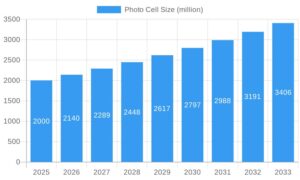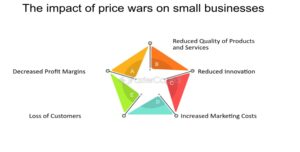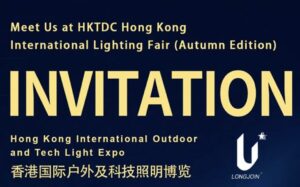The Rise of the South American Photocell Market: Brazil and Chile Lead the Three Growth Drivers
Introduce
South America is witnessing a significant transformation in its lighting infrastructure, with Brazil and Chile at the forefront. This shift relies on photocell technology. It makes city lights smarter and more energy-efficient. As cities grow and seek greener solutions, photocell systems are key to managing energy needs. They also boost the efficiency of public lighting. This article looks at what drives the photocell market in top countries. It also shows what this means for smart city growth.
How Is Brazil's Urbanization Influencing the Photocell Market?
Why is Brazil’s urban expansion a hotbed for photocell development? Because urban sprawl drives lighting needs. Brazil’s cities are growing fast, so they need smart and efficient lighting. This helps to cut energy waste and lower operating costs.
Urban growth in Brazil is more than just people moving to cities. It also creates big problems for roads and public services. More people rapidly move into cities. Municipalities must now extend and upgrade their urban street lighting networks.
Traditional lights cost too much and waste energy. That is why photocell street lights are in high demand. These smart sensors automatically adjust light levels to match natural daylight. This change cuts wasted energy and helps fixtures last much longer.
Brazil’s cities are growing fast. People now need more efficient street lights. There are more than 18 million public lights across the country. They use about 4 percent of all the energy the nation consumes. The surge calls for better solutions. Photocell sensors help control energy use.
The Brazilian government backs this shift with the FinBRAZEEC program. It also funds energy-saving public lighting through public-private partnerships.Such policies encourage integration of photocell street light systems. They align with the nation’s sustainability goals.
Switching from traditional lighting to LEDs gives us a chance to add photocell controls. This makes city lighting react faster and run more efficiently.
Brazil's Photocell Market Insights
Urban Factor | Impact on Photocell Market |
High Urbanization | Increased lighting demand |
FinBRAZEEC Program | Encourages energy-saving initiatives |
LED Shift | Enables integration of photocell controls |
What Drives Chile's Demand for Advanced Photocell Solutions?
Why is Chile turning to advanced photocell lighting sensors? Simple. Their strict environmental policies and need for energy-efficient, smart solutions demand it.
Chile has many land and weather features. They need special city planning. Cities like Santiago must balance lighting with preserving the dark sky. They do this because they sit close to important astronomical observatories.
Photocell systems that dim or shut off at high daylight levels are not a luxury. They are an essential need. These systems are crucial. They help Chile light its cities and protect the environment.
Chile shows its care for the environment. It has strict lighting rules to cut light pollution and protect the night sky for astronomers. These rules support using photocell light sensors. They change brightness based on ambient light and cut down on wasted energy use.
The country is focused on intelligent lighting. A major project installed 27,000 smart LED streetlights in Talca and Contulmo. These lights use remote control to ensure they run at their best. These initiatives show the market prefers light photocell technologies. It values both efficiency and adaptability.
Additionally, Chile’s updated energy efficiency standards aim to cut home power use by 12%. They also stop 6.5 million tons of CO₂ from entering the air. This encourages public lighting to use photocell sensors.
Chile's Smart Lighting Push
Policy/Project | Influence on Market |
Light Pollution Regulations | Boosts photocell adoption |
Talca Smart Lighting Project | Demonstrates high-performance needs |
Energy Efficiency Law | Promotes energy-saving solutions |
What Are the Three Key Drivers of Photocell Market Growth in South America?
We must know what drives this market’s growth. That way, stakeholders can plan for the future. Brazil and Chile are not simply adopting new tech—they’re reshaping urban life. The main forces behind this shift lie in innovation, government backing, and growing public demand for sustainable cities.
1. Technological Advancements
What technologies are reshaping lighting in South America? Photoelectric sensors and IoT are leading the way. Modern lighting means more than just bright light. It lets you adjust settings, saves energy, and changes to fit what you need.
Cities are growing faster than our roads and systems can keep up. We urgently need lights that adjust and manage themselves. IoT photocell controls let city planners monitor lighting remotely. They automate responses to real-time changes and efficiently cut system downtime. This increases safety and lowers both energy and maintenance costs.
2. Policy Support
What role do national policies play in shaping photocell adoption? A massive one. Strong public sector backing fuels momentum.
Legislation acts as a catalyst. National energy plans and environmental goals create an environment where municipalities are not only encouraged but required to upgrade lighting systems. Financial incentives, like those seen in Brazil, lower the barrier to entry, helping smaller cities invest in smart lighting infrastructure that uses photocell switches.

3. Market Demand
Why is market demand rising so fast? Urbanization, sustainability, and smarter cities — all pushing towards lighting control technologies.
Citizens and businesses alike expect modern, well-lit streets that are safe and efficient. As urban populations grow, infrastructure must evolve. Demand for reliable, low-cost lighting solutions with built-in energy savings has never been higher. Photocell lighting sensors answer this demand with dusk-to-dawn automation and long-term durability.
South America’s Photocell Growth Drivers
Driver | Description |
Technology | IoT & intelligent sensors improving control |
Government Policy | Supportive legislation for green energy |
Urban Demand | Smart city projects need responsive lighting |

What Are the Technical Problems Photocells Solve?
Still wondering what makes photocell controls a game-changer? Here’s what they fix:
Traditional street lighting is plagued with inefficiencies. Lights remain on during the day, maintenance is manual and slow, and inconsistent lighting can cause safety hazards. Photocells solve these problems with automation. They detect ambient light and activate only when needed. No more wasted electricity. No more guesswork about bulb outages. It’s smarter, safer, and more cost-effective.
Technical Challenges Solved by Photocells
Problem | Solution Provided by Photocells |
Energy Waste | Turns off lights in daylight |
High Operational Cost | Automation lowers overheads |
Inconsistent Lighting | Light sensors adjust brightness as needed |
Safety Concerns | Improves night visibility |
Explore Long-Join’s lighting control products for smart and sustainable solutions.
Conclusion
Brazil and Chile are changing South America’s lighting systems. They use photocell technology to make lighting more efficient. They firmly commit to urban growth, eco-friendly practices, and tech innovation. This clear focus makes them true regional pioneers in smart lighting solutions. These nations are putting in place helpful policies and using smart technology. The photocell market is ready to grow steadily.
External Links:
●https://www.worldbank.org/en/results/2022/05/02/lighting-the-way-to-safer-streets-in-brazil
●https://www.eib.org/attachments/documents/factsheet-felicity-maringa.pdf
●https://www.unoosa.org/documents/pdf/copuos/2024/Technical_Presentations/21AM/4_item_8_FACH_Format_PPT_UNOOSA_1.pdf
●https://fch.cl/en/initiative/efficient-lighting-for-chile/
●https://en.wikipedia.org/wiki/Internet_of_things






